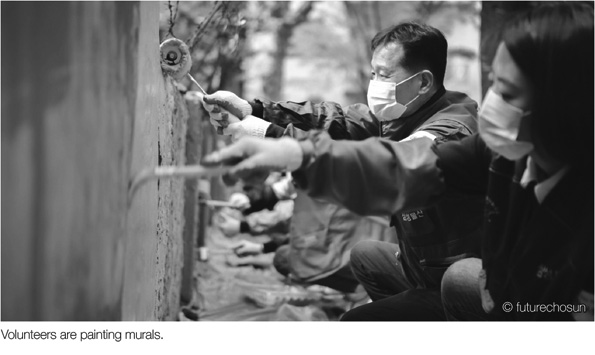
Recently, the methods of donation are evolving in an attempt to bring more fun to the process. These donations are called ‘funations’ by Koreans. This word is a compound word of ‘fun’ and ‘donation’. It is a fun and pleasurable way to donate. Funation began after a change of people’s perceptions about donations. Through this new style of donations, people give financial support to people who lack money and also give knowledge to those who lack knowledge. In other words, people share all necessary resources. In addition, people learn about the value of sharing when donating and display their civility by caring for less fortunate minorities. Consequently, it helps develop a stronger community spirit.
In Canada, there is a fundraising event, called Terry Fox Run. Terry Fox is a Canadian hero. In 1980, he started a charity marathon for cancer research and ran with a prosthesis on his right leg. Terry Fox ran a total 5,373 km in marathons in 143 days. Since then, Terry Fox Run has been held to honor his achievements, and tens of thousands of people have attended his events. Many people who were indifferent to the traditional monetary donation style became more interested in funations. Currently, Terry Fox Run has become the world’s largest donation campaign for cancer research. Canadians also continue to make donations through other participatory donation campaigns too.
In Australia, people make daily donations like gold coin donations. A gold coin translates to one or two dollars of gold in Australia. People help the needy by using their remaining change or donating small sums. As such, Australians learn the meaning of sharing through gold coin donations from their childhood, so they end up making donations as a way of life.
In Korea, there is a type of donation called Health Stairs. This is a donation where you can donate as much as you want. A sensor counts the number of steps people take, and every time they use the stairs, the donation accumulates by ten won for each step. These donations are used to provide equipment that helps children with disabilities walk. People who are less interested in donations learn that donating can be fun as they climb. CBNU has a mentoring program for refugees and multicultural people so that local students can have a variety of options when donating. Yoo Min-ho(’14, Dept. of Sociology), a member of the World Friends Program, said, “I sent an application form to the World Friends Program through the website of CBNU and went to an elementary school in Cambodia to share my knowledge. I was really rewarded just by my ability to help others. It was also a good opportunity to learn the true value of donations.”
As a result of this social change, the typical donation has evolved in a variety of ways from just donating money to help flood victims to helping unfortunate neighbors at the end of an unlucky year. The Korean Committee for UNICEF said, “We are using digital devices such as mobile gadgets to increase communication with young people and to create both publicity and sponsorship programs that can be charitable as well as enjoyable.” Moon Young-kyu, a professor of the Dept. of Social Welfare in Kyungbok University, said, “Considering the social realities, such as the increase of single-person households and the aging population, creating the right donation culture and more sharing opportunities have become even more important. Revisions and support for laws and institutions are needed, but diversified forms of donations are needed now more than ever. Typically, donors don’t know where their money is actually being used. Even if you don’t know where to donate, it is common to find newsletters from fundraisers that will give the necessary information. The transparency and credibility of non-profit organizations should be ensured by systematically obligating them to open their accounting books, including their fundraising totals, activities and budgets. If so, donations by individuals and sharing activities will increase. Donations and sharing do not only help others, but they are also a healing activity that satisfies the donees. Through the changing forms of donations, social conditions can be created where people feel that donating is a mutually beneficial activity with beautiful values.”
By Jung Jun-hoe
jjh38@cbnu.ac.kr


 All
All Experience
Experience






 Jung Jun-hoe
Jung Jun-hoe











